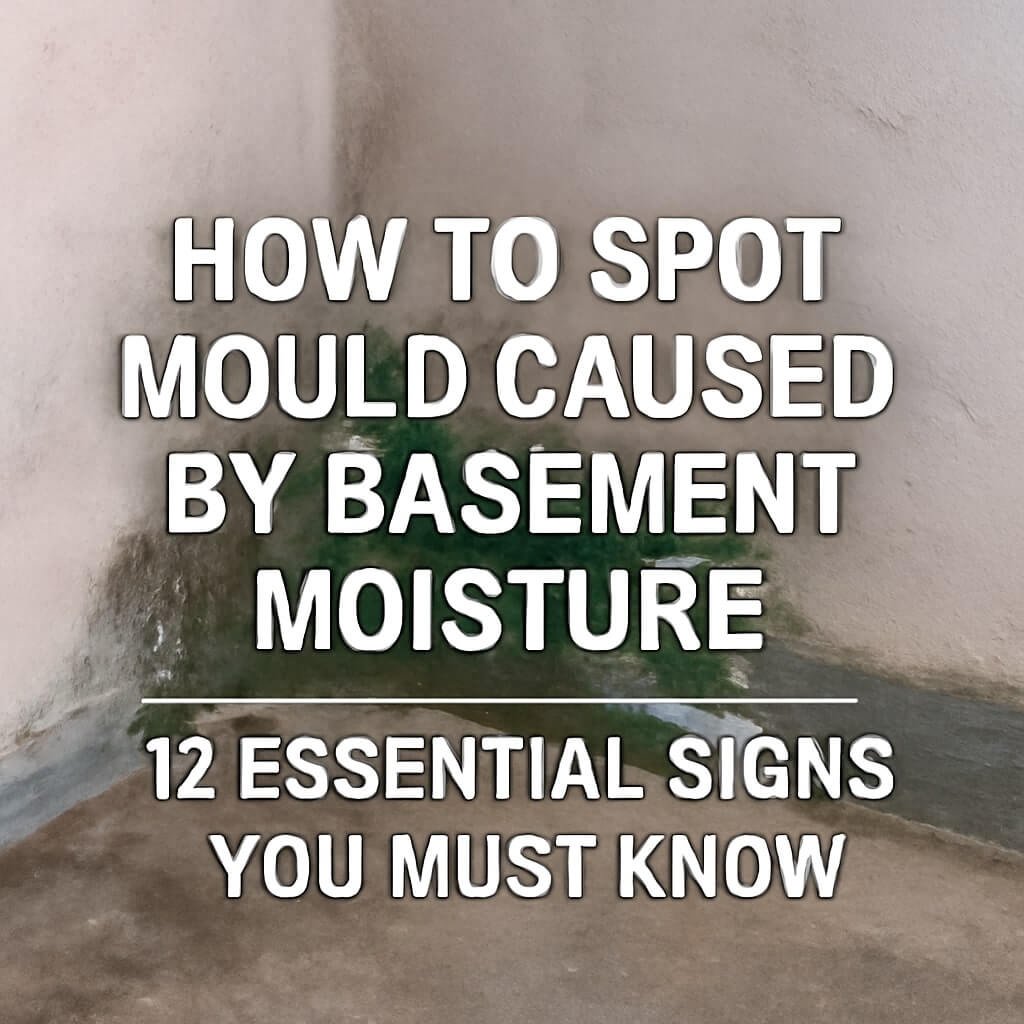Basements are notorious for being damp and dark spaces, making them prime spots for mould growth. Learning how to spot mould caused by basement moisture is crucial to protecting your home’s health and structural integrity. This guide will walk you through the most telling signs of basement mould, why it happens, and what you can do to prevent and remove it.
Understanding Basement Moisture and Its Role in Mould Growth

Basement moisture is the root cause behind most mould problems down below. Because basements sit partly or fully underground, they often come into contact with groundwater, leaks, and humidity that create a consistently damp environment. Mould thrives in these moist, poorly ventilated areas.
Common Sources of Basement Moisture
- Groundwater seepage: When water from the soil pushes against basement walls, it can penetrate cracks.
- Plumbing leaks: Burst or dripping pipes create localised damp spots.
- Poor ventilation: Without airflow, moisture hangs around longer.
- Condensation: Cold basement walls cause water vapour to condense, especially in humid climates.
Why Basements Are Prone to Mould
Basements tend to be cooler, darker, and more humid than other parts of the house. These conditions, combined with limited sunlight and airflow, create the perfect environment for mould spores to settle and grow.
What Is Mould and How Does It Grow?
Mould is a type of fungus that grows in colonies by digesting organic matter in damp environments. It spreads through tiny spores that float through the air and settle on wet surfaces. Given the right conditions — moisture, warmth, and organic material — mould grows rapidly.
Types of Mould Commonly Found in Basements
- Stachybotrys (Black mould): Often toxic, appearing dark green or black.
- Aspergillus: Common indoors, can cause allergic reactions.
- Penicillium: Usually blue or green; can damage materials.
- Cladosporium: Brown or green, found on wood and fabrics.
Key Signs of Mould Caused by Basement Moisture
Spotting mould early can save you money and health issues. Here are the 12 essential signs that indicate mould caused by basement moisture:
1. Musty Odour
One of the first and most obvious signs is a persistent musty smell. This smell is caused by microbial volatile organic compounds (MVOCs) released by mould spores.
2. Visible Discolouration on Walls and Surfaces
Look for patches or spots that appear black, green, white, or even orange. These often grow in irregular patterns along damp walls or corners.
3. Peeling or Bubbling Paint
Moisture trapped behind paint causes it to bubble, peel, or crack. This is a clear indicator of moisture problems and possible mould growth underneath.
4. Increased Allergy Symptoms
If family members experience sneezing, coughing, watery eyes, or headaches while spending time in the basement, mould may be the culprit.
5. Condensation on Windows and Pipes
Frequent condensation signals high humidity, which encourages mould growth.
6. Damp or Wet Carpet and Flooring
Persistent dampness under carpets or wood floors often leads to mould hidden beneath the surface.
7. Rust on Metal Surfaces and Fixtures
Excess moisture causes metal items to rust and corrode, signalling a humid environment conducive to mould.
8. Water Stains and Efflorescence on Walls
White powdery deposits (efflorescence) and yellow or brown water stains indicate water infiltration.
9. Warped or Soft Walls and Wood
Mould can weaken building materials, causing wood to warp or drywall to feel soft and crumbly.
10. Presence of Mould Spores in Air Samples
Invisible spores floating in the basement air can be detected with professional testing or DIY kits.
11. Pest Infestation
Mould and moisture attract pests like silverfish, termites, and cockroaches.
12. Persistent Damp Smell Even After Cleaning
If the musty odor remains despite cleaning efforts, mould colonies are likely embedded in hidden areas.
How to Test for Mould in Your Basement

You can start with DIY mould testing kits available at hardware stores, which typically involve air sampling or surface swabs. However, these tests may not be fully reliable. For accurate results, professional mould inspections and lab analysis are recommended, especially if health symptoms arise.
Health Risks Associated with Basement Mould
Mould exposure can cause a range of health problems, especially in sensitive individuals such as children, elderly, or those with respiratory issues:
- Asthma and allergy flare-ups
- Chronic coughing and wheezing
- Skin irritation and rashes
- Sinus infections and headaches
- Severe reactions in immunocompromised people
Preventive Measures to Control Basement Moisture and Mould
Keeping your basement dry is the best way to prevent mould. Here are some proven strategies:
Effective Waterproofing Techniques for Basements
- Seal cracks and gaps with waterproof sealants
- Install drainage systems like French drains to divert groundwater
- Apply waterproof coatings on walls and floors
Using Dehumidifiers and Ventilation
- Use dehumidifiers to maintain indoor humidity below 60%
- Ensure proper ventilation through exhaust fans or vents
- Keep basement windows open when weather permits
How to Safely Remove Mould from Your Basement
For small areas, you can clean mould using:
- Protective gear (gloves, mask, goggles)
- A mixture of detergent and water or diluted bleach solution
- Scrubbing affected surfaces thoroughly and drying completely
For large infestations or toxic mould (like black mould), it’s safer to hire certified professionals who can assess and remediate the problem.
When to Call a Professional for Basement Mould Issues
If mould covers an area larger than 10 square feet, or if you experience health symptoms linked to mould exposure, professional intervention is recommended. Experts have specialised equipment and training to handle mould safely and effectively.
Frequently Asked Questions (FAQs)
What causes basement mould to grow so quickly?
Can mould from basements affect other parts of the house?
Is mould removal covered by home insurance?
How often should I inspect my basement for mould?
Are DIY mould tests reliable?
What health symptoms should prompt immediate mould inspection?
Conclusion: Stay Ahead of Basement Mould with Awareness and Action
Knowing how to spot mould caused by basement moisture empowers you to act quickly before the problem worsens. Regular inspections, controlling moisture, and timely remediation will keep your basement safe, healthy, and mould-free.



